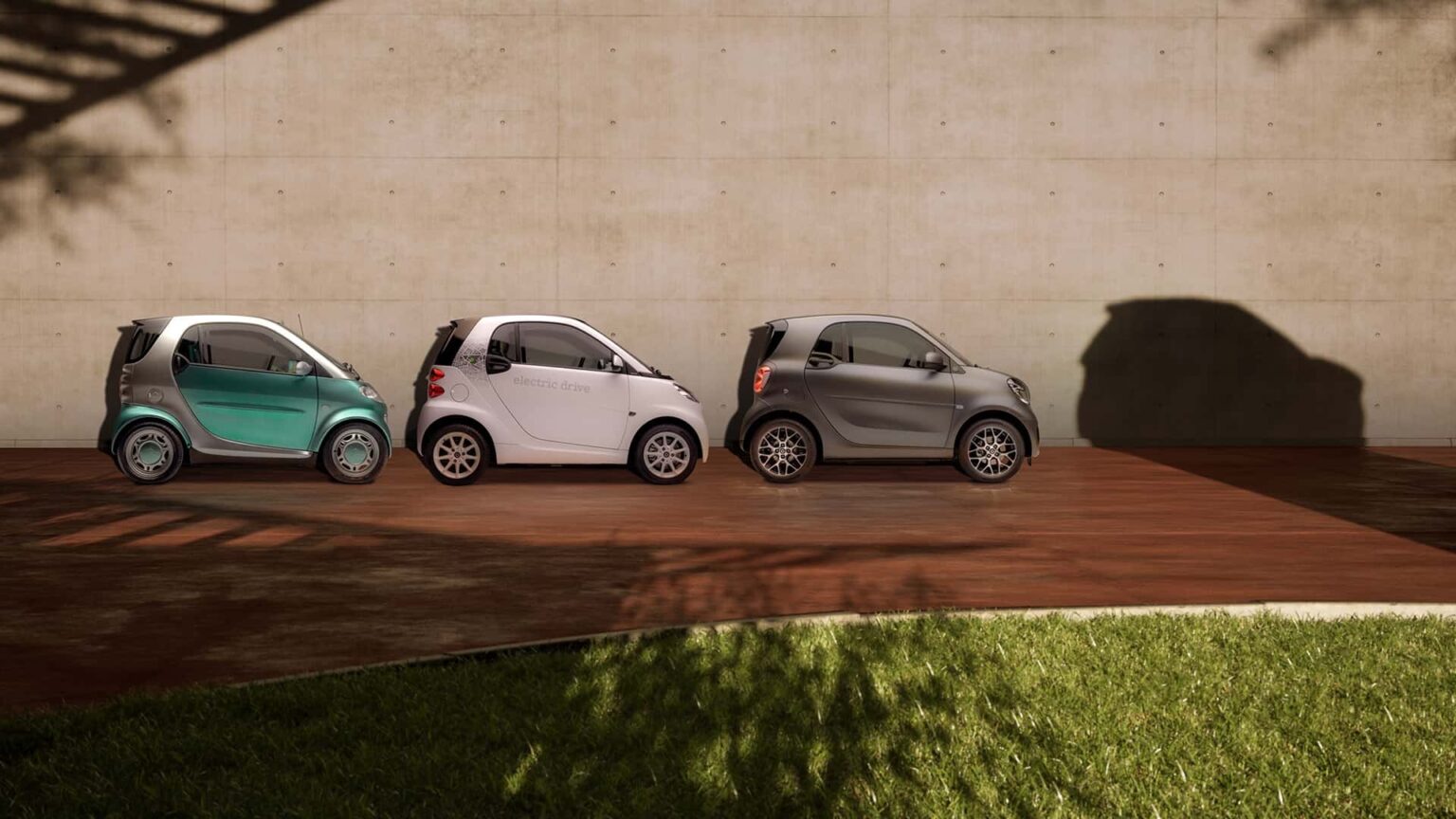Smart hasn’t been the car company we grew up with for quite some time. Back in 2019, Mercedes and Geely set up a 50:50 joint venture to co-manage the Mini rival. Production also shifted to China, while the Hambach plant in France was sold to Ineos, which now builds the Grenadier off-roader and pickup there. Today’s Smart-badged models are far larger and heavier, topping out with the #5, a midsize SUV that tips the scales at 5,401 pounds (2,450 kilograms) and stretches 185.2 inches (4705 millimeters).
Now, Smart is taking a page out of its old playbook by reviving the car most of us associate with the brand: the ForTwo. Rebranded as the #2, the all-new city car will mark the company’s return to the A-segment when it arrives at the end of 2026. It will ride on a new platform developed specifically for ultra-compact cars and feature a design penned by Mercedes. Like its larger stablemates, the #2 will be built in China.
Photo by: smart
There’s no word yet on a U.S. launch, where the name has an unfortunate connotation. Instead, the tiny electric hatchback will go on sale in China, Europe, and a handful of other markets. Smart calls itself the “inventor of the original city car” and says the new model will once again be a pint-sized two-seater to tackle the urban jungle.
Shadowy teasers hint that Smart will keep much of the quirky silhouette of earlier ForTwos, though the new car appears more angular, dropping the rounded surfaces of its predecessors. Unlike some of Smart’s other models, which still offer combustion engines, the #2 will be purely electric. With a bespoke platform, engineers will likely carve out a roomier cabin without compromising the car’s tiny footprint.
In Europe, most automakers have abandoned the A-segment. The Volkswagen e-up! and its Skoda and SEAT siblings are long gone. However, VW plans to launch the ID.1 next year, but with the concept measuring 152.7 inches (3880 millimeters), the production car will be considerably larger than both the e-up! and the Smart #2.
7
Source: Smart
It’s refreshing to see a new small car in today’s industry dominated by car bloat. With battery tech having advanced significantly since the old electric Smart, the new model should easily beat the EQ ForTwo’s modest 74-84 miles of WLTP range. Expect the wheels to be pushed to the corners once again, giving the car a long wheelbase relative to its size and allowing room for a chunky battery.
Pricing remains the big question. The VW ID.1 is expected to start at around €20,000 in Europe. If the Smart #2 ends up costing significantly more, its charm alone may not be enough to pull buyers away from a more practical, five-door hatchback like VW’s upcoming entry-level EV. Additionally, Renault is bringing back the Twingo in 2026 as a small EV, even cheaper, at under €20,000.
Read the full article here


